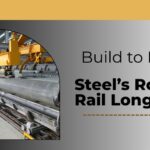Most project teams blame weather, labor, or permits for delays. But when the start date slips or the work stalls, one quiet reason shows up again and again: steel parts that arrive unready.
Missing holes. Incomplete forming. Wrong bundling. These things don’t always look serious at first. But they start a chain reaction that pushes timelines further out.
Here’s where these issues begin and how they shape everything that follows.
Fabrication Errors Often Begin at The Profile Stage
Poorly formed profiles affect every step that follows. A slightly bent web or off-center hole puts stress on assembly crews. They spend hours trying to make something fit that was never right to begin with.
One misaligned flange edge might force the team to re-drill matching holes. One incomplete bend might stop an entire bracket from locking into place. Multiply this across hundreds of parts, and those “small fixes” cost days.
This kind of delay usually stays invisible in the early stages of planning. It only shows up on site, once the material is on the floor and crews are stuck working around it.
Site Teams Waste Hours on Field Corrections
When profiles come ready (clean, measured, punched, and stacked), they go straight to use.
When they come unfinished, the site becomes a fabrication shop. That costs time and pulls crew energy away from planned tasks.
Field corrections also raise safety concerns. Cutting, grinding, and welding on-site requires permits and supervision. It slows down everything else around it.
The earlier a profile is finished and verified, the less stress is placed on the final install crew.
Inconsistent Sections Break Assembly Momentum
Large projects rely on momentum—prepping, lifting, placing, welding, bolting. When profiles arrive consistently, that momentum holds. When the parts vary in thickness, width, or tolerance, crews slow down.
Some teams get stuck sorting through piles, looking for parts that match. Others halt completely while a supervisor decides whether to send something back or work around it.
Either way, the job moves slower than expected.
Worse, if the mismatches get installed, they carry alignment issues forward into the structure. That creates rework later when other elements clash or fail inspection.
Minor Delays Multiply Across Subcontractors
Projects rarely run in a straight line. Work shifts from vendor to vendor, team to team. So when one profile delay happens, it holds up more than just the immediate task.
Here’s how a small delay spreads:
- Steel arrives with unpunched holes
- Fitter reworks the part manually
- Work slows on the sub-assembly line
- Lift schedule gets bumped by one day
- Crane rental hours increase
- Adjacent team misses their handover window
- Punch list grows longer before final inspection
This chain often leads to overtime, rescheduling, and extended equipment rental—none of which were part of the original plan.
Missing QA Documents Trigger Extra Checks
Even if the profiles are cold rolled formed correctly, incomplete documentation can block progress.
For many sectors (rail, ports, and defense), QA paperwork is non-negotiable. Without heat numbers, dimension checks, or packing traceability, engineers hold the batch.
That delay may only last a day or two. But when your project depends on staged deliveries or nighttime lifts, even one missed slot adds risk. Site access may close. Crew shifts get wasted.
Readiness isn’t just about material. It includes everything that proves the material matches drawing, spec, and batch.
Final Thoughts
Projects run faster when the right material shows up at the right time—ready to go. Profile readiness reduces rework, preserves sequencing, and gives each trade a smoother handoff.
At our end, we prepare steel profiles with those realities in mind. Our teams check geometry, run fit tests, and bundle parts in site-ready configurations.
Whether the job involves rail wagons, marine locks, or structural frames, we deliver parts designed to hit the ground running.
If your project depends on timing, it helps to start with steel that’s ready to keep pace. Get in touch with us to learn more.





